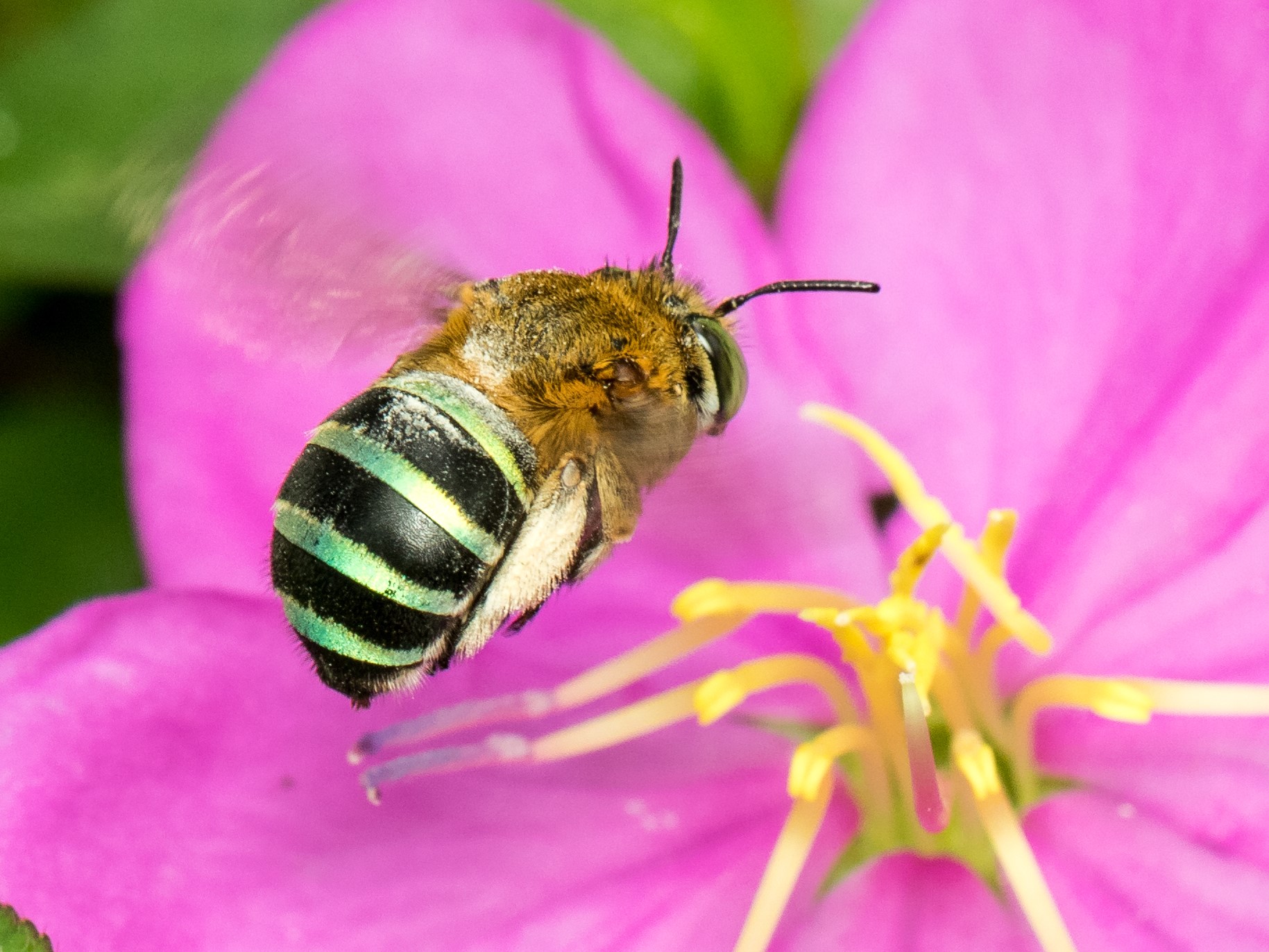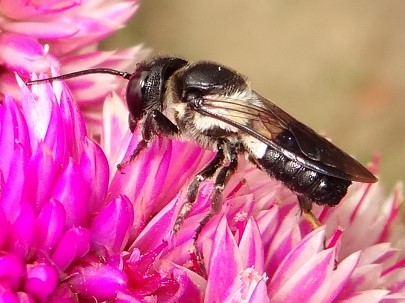Carpenter Bees of Jurong Lake Gardens
Carpenter bees from the genus Xylocopa are large and often hairy bees that are usually dark coloured and about 20-30 mm in length.
 Behaviour and Ecology
Behaviour and Ecology
True to their name, they create burrows in solid wood, usually dead tree trunks and branches or timber used for construction. These burrows branch out into many parallel passageways. Brood cells in their nest are filled with pollen and deposited with a single egg each. Unlike honey bees, which live in colonies with a single egg-laying female (the queen), Carpenter Bees are considered solitary bees which live singly or in small groups. All females are able to reproduce.
In addition to being large, they also buzz loudly while foraging for nectar and pollen from many trees and shrubs. Despite this, they are peaceful giants that are relatively docile and harmless. They carry out buzz pollination, where they grab onto flowers and buzz at a specific frequency, releasing pollen in the process. They function as pollinators of many local plants such as Sendudok (Melastoma malabathricum) and Simpoh Air (Dillenia suffruticosa).
About 13 species of carpenter bees have been recorded in Singapore. Here are some common species found in Jurong Lake Gardens.
Broad-footed Carpenter Bee
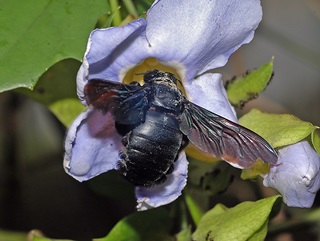 Photo credit: John X. Q. Lee Photo credit: John X. Q. Lee |
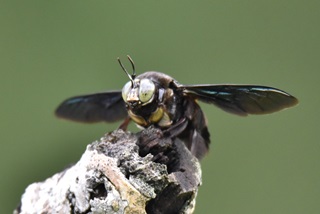 Photo credit: Nicholas Kee (NParks) Photo credit: Nicholas Kee (NParks) |
| Scientific name: | Xylocopa latipes |
| Common name: | Broad-footed Carpenter Bee |
| Family: | Apidae |
 35 mm 35 mm |
 What does it look like?
What does it look like?
The all-black Broad-footed Carpenter Bee is the largest bee in Singapore, and also one of the largest in the world. It is shiny and fully black with metallic blue green or purple wings in sunlight. It has a distinctive, low-pitched buzzing that can be heard while foraging. Males have unusual front legs that are lighter in colour and covered in smooth, brush-like hairs.
White-cheeked Carpenter Bee
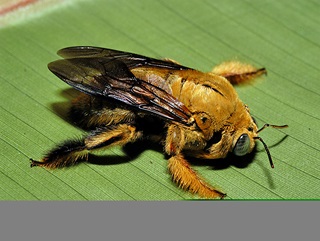 Male. Photo credit: John X. Q. Lee Male. Photo credit: John X. Q. Lee |
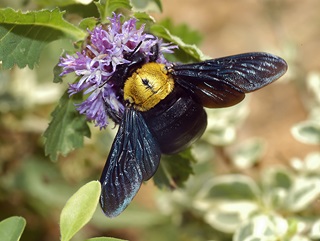 Female. Photo credit: John X. Q. Lee Female. Photo credit: John X. Q. Lee |
| Scientific name: | Xylocopa aestuans |
| Common name: | White-cheeked Carpenter Bee |
| Family: | Apidae |
 20 mm 20 mm |
 What does it look like?
What does it look like?
The female is mainly black with a thorax covered with deep yellow hairs except for a small black patch in the centre. The male, in contrast, is covered with fine yellow hairs, making it look fully dark yellow. They are named after a small patch of fine white hairs found behind their eyes in both sexes.
Females are often mistaken for the Yellow-and-black Carpenter Bee (X. flavonigrescens), though one way to tell them apart is to look at the luminous colours, known as iridescence, of their wings. Female White-cheeked Carpenter Bees have a purplish brown iridescence on their wings as compared to the bluish-green iridescence of the Yellow-and-black Carpenter Bee.
Yellow-and-black Carpenter Bee
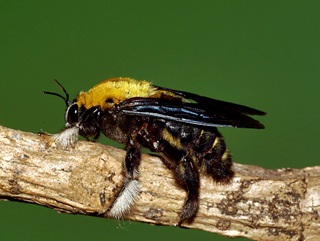 Male. Photo credit: John X. Q. Lee Male. Photo credit: John X. Q. Lee |
 Female. Photo credit: John X. Q. Lee Female. Photo credit: John X. Q. Lee |
| Scientific name: | Xylocopa flavonigrescens |
| Common name: | Yellow-and-black Carpenter Bee |
| Family: | Apidae |
 20 mm 20 mm |
 What does it look like?
What does it look like?
Females are often mistaken for the White-cheeked Carpenter Bee as they look exceedingly alike, though one way to tell them apart is to look at the iridescence of their wings. Males are easier to differentiate as their thorax is a more vibrant yellow that gets progressively darker towards the end of the abdomen.



